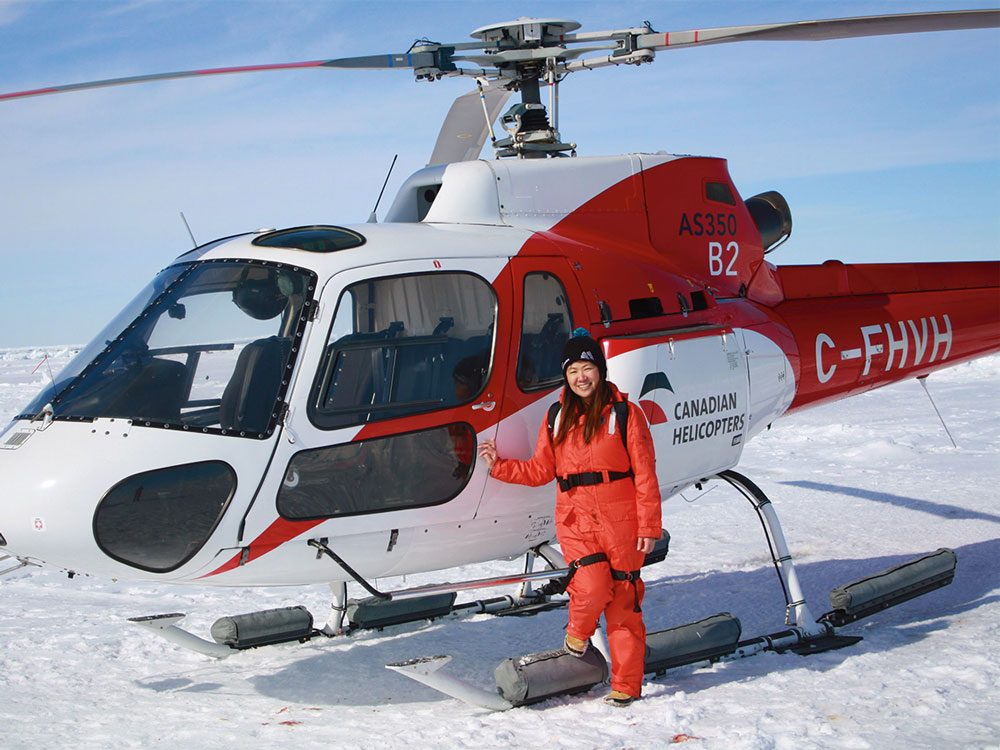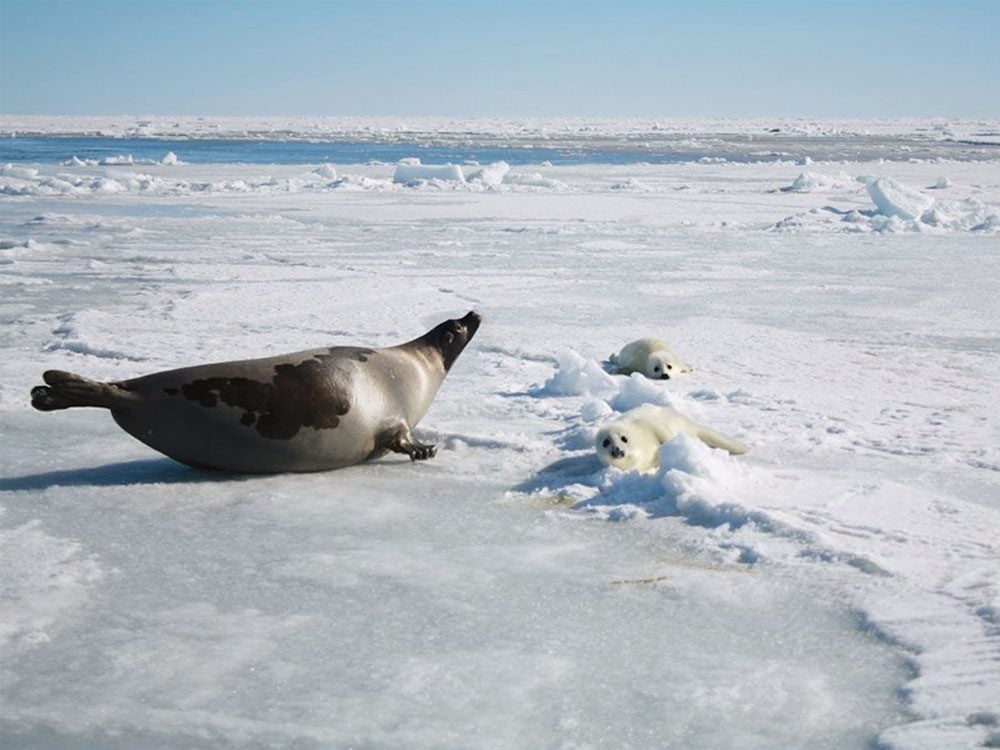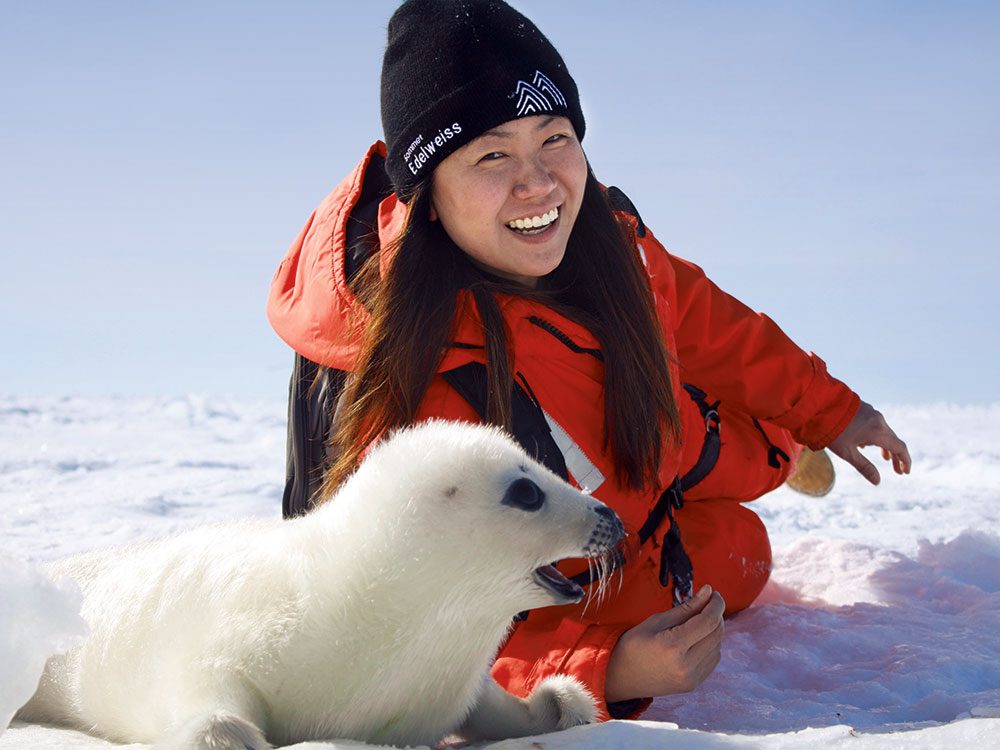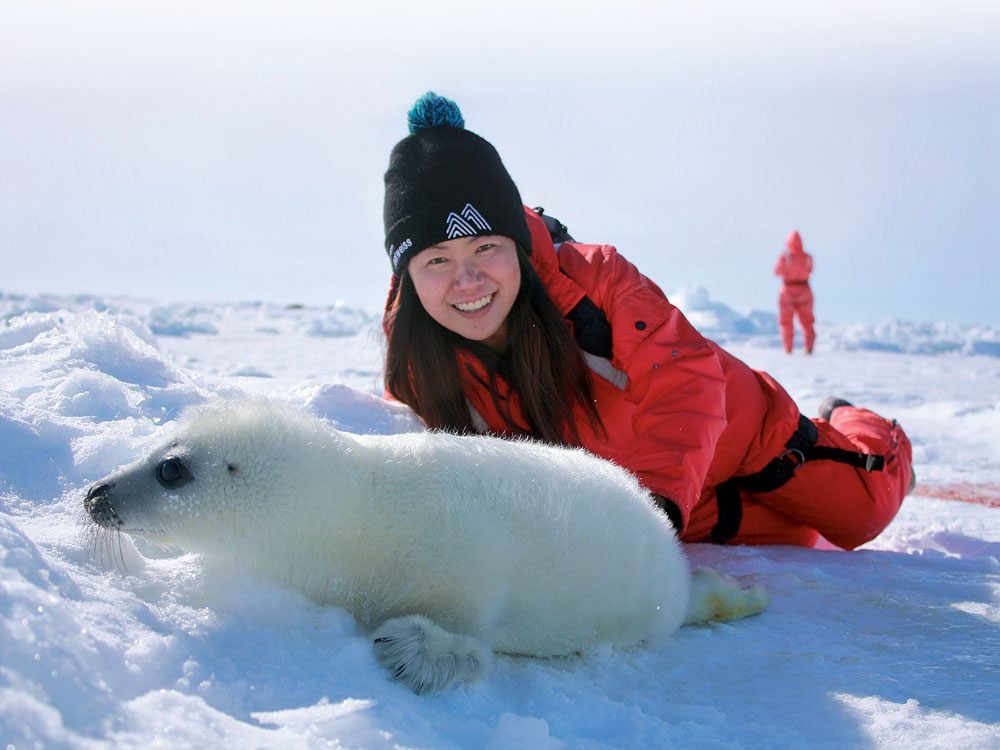
Arriving in the Magdalen Islands
I first heard about the baby seals around Îles de la Madeleine (Magdalen Islands) a few years back. Being an animal lover, I immediately added a visit to see them to my bucket list.
Unfortunately, in the past couple of years, due to global warming, the ice conditions had not been suitable for helicopters to land. Afraid the opportunity would one day be gone forever, I booked the first flight available upon hearing the announcement that tours would resume last March.
Îles de la Madeleine forms an archipelago in the heart of the Saint Lawrence in Quebec. Given its remote location, I had three stopovers—Montreal, Quebec City and the Gaspé—before finally landing at the small local airport.
Before heading out on the seal-watching tour, all visitors must put on a survival suit over their winter clothes, and then board a helicopter to be flown out to the sea ice. Here, from the end of February to early March each year, tens of thousands of seals come to breed. Surprisingly, I was the only Canadian visitor in our small group; the others had all come from Japan and Russia.
During the 25-minute helicopter flight, we flew past the fragmented, snow-covered sea ice. As we got closer, we began spotting herds of seals. The squeals of excitement from the people aboard drowned out the roaring of the helicopter blades.

Harp seal watching season begins
When we landed, we were greeted by a guide. It was only the second day of the seal-watching season, so most of the baby seals were only about two days old, their fur a fluffy white. I was surprised to see how abundant they were! During a short walk, I’d already encountered half a dozen. Some were sleeping, while others were nursing or already exploring the surrounding terrain.
They were just as adorable as they look in pictures—round, dark eyes, a pointy nose with whiskers, and furry bodies. But don’t be fooled by their cute puppy-dog faces; they are, after all, wild animals and these cute little pups can be aggressive. When I tried to pat one, he growled and snarled at me. “Whoa,” I said. “You have quite an attitude for a two-day old!”
The mums were generally quite relaxed. They left the pups on the ice while going for a dip, fishing or taking a nap nearby. Perhaps they knew we posed no threat to their babies; either way, they didn’t seem to mind our presence. I only noticed one, perhaps a new mum, being quite alert. She watched me closely from a short distance away, occasionally making a warning sound, while I was taking photos of her pup. I kept my distance and slowly backed away.
Don’t miss Canada’s 18 coolest winter travel destinations!

Humans and animals coexisting in harmony
Many people set up professional-looking cameras with zoom lenses aimed directly at the seals and began clicking away without disturbing them.
It was a mild, sunny day, around 0°C with no wind. Warmly dressed in the suit the tour company provided, I could easily lie down on my stomach, mimicking the same pose as the seals, and simply blend in and enjoy being one of them.
It was truly a winter wonderland with humans and animals coexisting in harmony. Looking around, I realized it resembled photos of the Arctic I’d seen. With the exception of the sounds of the seals snorting, calling to one another or blowing bubbles underwater, it was so tranquil.
Without their main predator, polar bears, the pups could safely grow up. In as little as 10 days, they would lose their fluffy fur and start swimming, before heading out further north.
A big question mark and concern for me before taking this trip was the question of seal hunting. I had read horrible stories of fishermen hunting the babies for their fur right after the tourist season ended. I bluntly asked if this was the case and was told that it was illegal to hunt baby seals in Canada and has been since 1987.
Hundreds of wildlife species face extinction in Canada—but it’s not too late to save them.

Protecting the Maritimes’ baby seals
People do hunt the adults for meat, but they have a quota and must follow all the rules set by the government.
When I visited the Museé de la Mer, a museum dedicated to the archipelago’s maritime history, I learned about the history here, including the fact that when the early settlers first came to the island in the 1600s, fishing and seal hunting were the major industries driving the growth, along with agriculture. It was their means of survival especially during those isolated winters when no electricity or transportation was available. It wasn’t until much later that tourism started growing and gradually became a main economic contributor.
From a history perspective, I now have a better understanding of why seal hunting—although much more regulated and restricted these days—is still allowed. With so many people becoming more eco-conscious, however, and the demand for seal products decreasing, I believe seal hunting will eventually end in the years to come.
Next, find out what it’s like taking a helicopter tour of the Canadian Rockies.